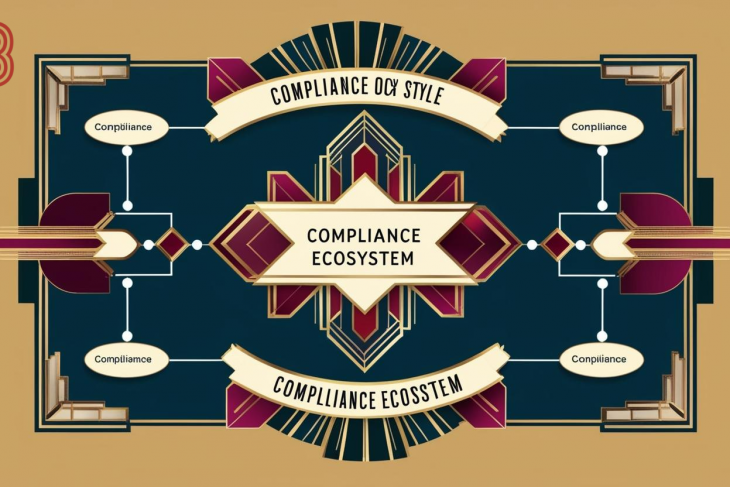
Introduction
In a world increasingly defined by complexity and unpredictability, organizations and governments alike are turning to advanced tools to improve risk assessment and mitigation. Geospatial intelligence (GEOINT), which involves the collection, analysis, and visualization of geospatial data, has become an indispensable asset in the field of risk management. Through satellite imagery, geographic information systems (GIS), remote sensing, and real-time mapping technologies, GEOINT provides crucial insights that support informed decision-making.
Whether responding to natural disasters, anticipating military threats, optimizing logistics, or mitigating environmental risks, geospatial intelligence offers the ability to see patterns, trends, and vulnerabilities that traditional methods often overlook.
1. Understanding Geospatial Intelligence (GEOINT)
Geospatial intelligence is derived from the exploitation and analysis of imagery and geospatial information to describe, assess, and visually depict physical features and geographically referenced activities on Earth. At its core, GEOINT integrates multiple disciplines:
Geographic Information Systems (GIS): For storing, analyzing, and visualizing spatial data.
Remote Sensing: Using satellites, UAVs (drones), and aircraft to capture imagery and data.
Imagery Intelligence (IMINT): Involving the analysis of visual representations, such as satellite photos.
Human Geography: Understanding population distribution, cultural patterns, and social dynamics.
These components work together to build a multi-dimensional picture that can guide risk management strategies across sectors.
2. The Role of GEOINT in Risk Management
Risk management encompasses the identification, analysis, and response to risk factors that could negatively impact an organization or community. Geospatial intelligence enhances this process through:
a. Risk Identification
Mapping areas prone to natural hazards (e.g., floodplains, earthquake zones).
Identifying infrastructural weaknesses using satellite imagery.
Monitoring socio-political tensions in volatile regions.
b. Risk Assessment
Layering spatial data to quantify the probability and impact of potential threats.
Using historical geospatial data to predict future risks.
Integrating environmental and demographic data for comprehensive assessments.
c. Risk Mitigation
Designing strategic interventions based on geographic vulnerabilities.
Optimizing resource allocation (e.g., emergency services positioning).
Informing land-use planning and urban development to avoid high-risk zones.
d. Risk Monitoring
Real-time surveillance through satellite and drone imagery.
Change detection over time (e.g., deforestation, urban sprawl).
Early warning systems for disaster preparedness.
3. Key Use Cases of GEOINT in Risk Management
a. Disaster Risk Reduction
GEOINT is crucial in both pre-disaster preparedness and post-disaster response. For example:
Earthquake Risk: Mapping tectonic fault lines and building integrity across urban areas.
Flood Management: Using digital elevation models (DEMs) to simulate floodplains and manage drainage systems.
Wildfire Mitigation: Real-time satellite monitoring for ignition points and fire spread patterns.
b. Climate Change and Environmental Risk
GEOINT supports climate resilience through:
Monitoring glacial retreat, sea-level rise, and desertification.
Tracking deforestation and illegal land-use changes.
Assessing coastal vulnerability due to rising sea levels and erosion.
c. Public Health and Pandemic Response
During health crises such as COVID-19, GEOINT enabled:
Mapping outbreaks and transmission patterns.
Analyzing population mobility and contact networks.
Identifying vulnerable populations and resource needs.
d. Military and National Security
National intelligence agencies employ GEOINT to:
Monitor geopolitical hotspots and troop movements.
Secure borders and detect smuggling routes.
Evaluate terrain for tactical operations.
e. Critical Infrastructure Protection
Geospatial intelligence helps to safeguard essential systems such as:
Power grids and pipelines via remote monitoring.
Urban transportation and logistics using real-time traffic analytics.
Cyber-physical infrastructure by mapping data centers and telecom nodes.
f. Supply Chain Risk Management
By visualizing supplier networks and transportation routes:
Companies can identify chokepoints and single points of failure.
Optimize distribution centers based on population density and access.
Monitor disruptions caused by weather, conflict, or regulatory changes.
4. Technological Innovations Driving GEOINT
Several advancements are enhancing the power and precision of geospatial intelligence:
a. High-Resolution Satellite Imagery
Modern satellites provide real-time, high-definition images with resolution down to 30 cm, allowing detailed analysis of assets, terrain, and changes over time.
b. Artificial Intelligence and Machine Learning
AI algorithms can process large geospatial datasets rapidly to:
Detect anomalies.
Predict future trends (e.g., urban growth).
Automate change detection and object recognition.
c. Big Data and Cloud Integration
Cloud platforms enable the storage and analysis of petabytes of geospatial data, integrating disparate data streams from IoT sensors, mobile devices, and satellites.
d. Unmanned Aerial Vehicles (UAVs)
Drones offer flexibility for local, high-resolution surveillance. They are ideal for:
Infrastructure inspections.
Disaster zone assessments.
Environmental monitoring.
e. Augmented and Virtual Reality
AR/VR enhances situational awareness for field operators and planners, providing immersive geospatial simulations of terrain and risk environments.
5. Challenges in GEOINT Implementation
Despite its advantages, GEOINT adoption in risk management faces several obstacles:
a. Data Overload
The volume of data collected can overwhelm analysis capabilities without robust filtering, processing, and interpretation tools.
b. Data Accuracy and Quality
Errors in spatial data can lead to flawed assessments and poor decision-making. Ensuring data reliability is crucial.
c. Privacy and Ethical Concerns
Geospatial tracking can raise concerns about surveillance and individual privacy, especially in public health or security applications.
d. Cost and Accessibility
High-resolution satellite data and advanced analytical tools can be expensive, limiting access for smaller organizations or developing nations.
e. Skill Gaps
Effective use of GEOINT requires skilled analysts who understand both l technologies and domain-specific risks.
6. Integration with Broader Risk Management Frameworks
For GEOINT to be effective, it must be embedded within broader enterprise or governmental risk management systems:
Enterprise Risk Management (ERM): Integrating geospatial insights into strategic and operational risk dashboards.
Business Continuity Planning: Using spatial scenarios to plan redundancies and response mechanisms.
Crisis Management Systems: Leveraging real-time geospatial data for coordination and communication.
Case in point: During Hurricane Harvey, FEMA integrated GIS data into its emergency response protocols to prioritize rescues and allocate resources effectively.
7. Geopolitical Implications and National Strategies
Governments are increasingly recognizing geospatial intelligence as a strategic national asset. Agencies such as the U.S. National Geospatial-Intelligence Agency (NGA), the European Union Satellite Centre (SatCen), and ECIPS in the EU emphasize GEOINT in their security and defense strategies.
Border Security: Identifying and predicting cross-border criminal activities.
Resource Disputes: Mapping territorial claims and assessing satellite imagery for violations.
Cyber-Geospatial Convergence: Integrating cyber and spatial data to secure critical digital infrastructure.
8. Future Trends in Geospatial Intelligence
The future of GEOINT in risk management will be shaped by several trends:
a. Predictive Analytics
Moving from descriptive to predictive intelligence, GEOINT will help forecast risks before they materialize, using historical data and real-time feeds.
b. Global Geospatial Data Sharing
International collaboration will be crucial in addressing global risks, such as climate change or pandemics. Shared satellite imagery and open-source GIS platforms will play a key role.
c. Smart Cities and Urban Resilience
With IoT and smart infrastructure, cities will use GEOINT to manage traffic, air quality, energy use, and emergency response in real time.
d. Quantum Sensing
Emerging quantum technologies could revolutionize remote sensing with ultra-sensitive detection of magnetic and gravitational fields for geospatial applications.
Summary
Geospatial intelligence stands at the forefront of modern risk management, bridging the gap between data and action. As the challenges facing humanity become more interconnected—spanning environmental, technological, and geopolitical domains—GEOINT offers a powerful lens through which to visualize, understand, and mitigate these risks.
To fully realize its potential, organizations must invest not only in technology but also in human capital, ethical frameworks, and cross-sector partnerships. The strategic integration of geospatial intelligence into risk management practices promises not only greater resilience but also a safer, more adaptive future for all.




















